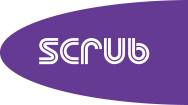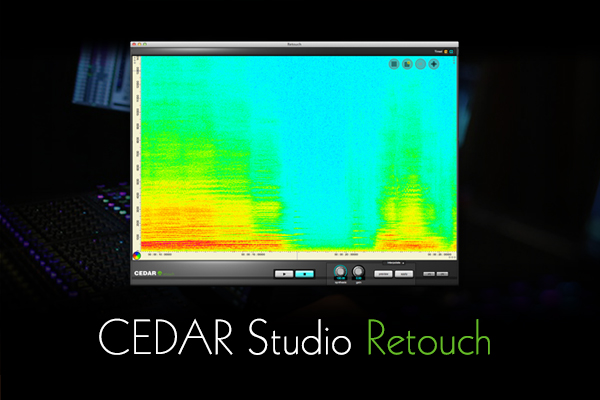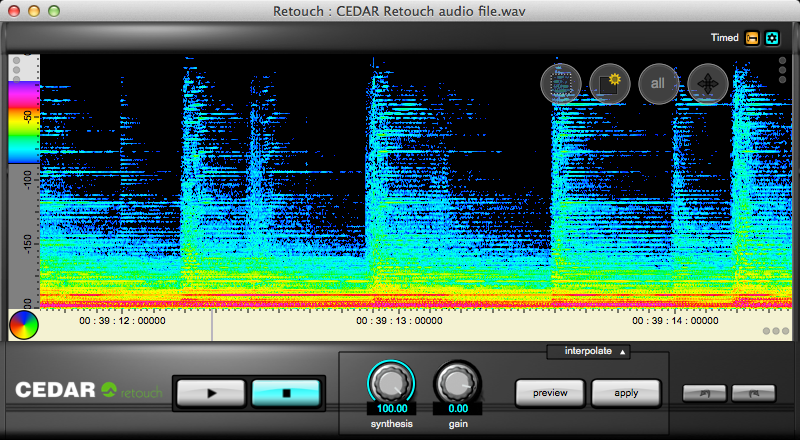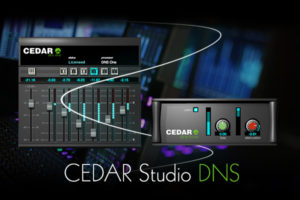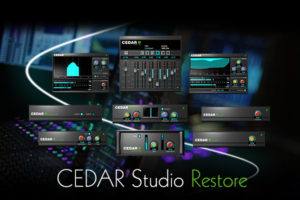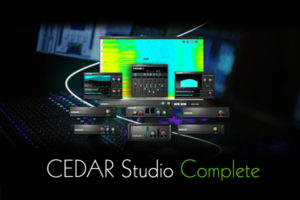CEDAR Studio Retouch™
Audio repair and restoration plug-in
Price excludes VAT
Product lists can be submitted to HHB for a packaged quotation
Nowadays, we take spectral editing for granted, but it’s a relatively recent invention, first seen in 2002 when CEDAR patented the underlying technology and announced the first version of Retouch. It’s not an exaggeration to say that it changed the mastering industry and, today, it’s quite likely that you have access to some form of spectral editing manufactured under licence from CEDAR.
Unlike conventional tools, Retouch allows you to define the temporal and spectral content of the sound that you want to manipulate using the types of tools commonly found in photographic image manipulation software. Once identified, those sounds can be manipulated using any of the numerous tools at your disposal; Interpolation (to suppress or remove unwanted sounds) as well as Copy, Patch, and Delete tools, a Volume tool that allows you to listen to just the marked sounds (or everything but the marked audio) plus powerful new Cleanse and Revert tools.
So why should you choose Retouch? It’s because it does the job better than anything else, providing clinical and seamless repair of otherwise intractible problems without leaving behind (or, for that matter, introducing) unwanted artefacts. With its slick user interface and enhanced processing capabilities, Retouch stands alone as the spectral editor of choice for the top mastering studios, mix suites, post houses, forensic laboratories, and anyone else who needs to be able to identify, isolate and manipulate individual sounds within an audio file.
Studio Retouch™ modes
Interpolation
This is the classic spectral editing mode. It allows you to define an unwanted sound, remove it the touch of a button and replace it with sound rebuilt using powerful models that analyse the surrounding audio and then rebuild what would have been there had the noise not occurred.
Patch
Patch mode allows you to replace an area of audio with another of the same duration and the same range of frequencies (although not necessarily of the same frequencies). Think of this as copying the data from elsewhere in the spectrogram to the region that you initially defined.
Copy
Copy mode allows you to move an area of audio to another position. You can think of this as copying the data from a defined region to anywhere else in the spectrogram.
Erase
This mode provides a quick and simple way to erase unwanted events and replace them with background (atmos) calculated from the surrounding audio.
Volume
You may affect the amplitude of the signal within a region, and independently affect the amplitude of the signal lying outside that region. This allows you, for example, to reveal individual sounds or utterances within a file, either by amplifying the wanted sounds or by suppressing the rest of the audio, or both. By marking multiple regions simultaneously and reducing the amplitude of the ‘outside’ to its minimum, you can also use this to retain only the sounds or words wanted in an audio file.
Cleanse
Despite the power of Interpolation, Patching and Copying, there are times when those modes are unable to eliminate unwanted sounds quickly and efficiently. Example of this include restoring sounds such as wanted speech in the presence of strong, but relatively short-lived background noises such as gusts of wind blowing across a microphone. Cleanse mode was developed specifically to help in these situations, and will separate the wanted signal from the unwanted and allow you to suppress the noise at the touch of a button. Don’t be misled – this isn’t a rehash of existing noise reduction methods, but a powerful new patented process that achieves results never before possible.
Revert
Revert allows you to define any part of the spectrogram and return it to its original, unprocessed form. Much more powerful than stepping backward and forward through a list of actions, this allows the user to reinitialise any part of the audio no matter where it came in the process history, thus leaving later work untouched. You don’t even have to Revert whole Retouch operations. If you like the result of a single process at, say, the end of a note, but feel that you could do better at the start of the note, you can reinitialise and reprocess this section of the audio no matter how many Retouches you have performed elsewhere since then. It’s so quick and so powerful that you’ll wonder how you ever worked without it.
CEDAR Studio 9 includes an update to Retouch
Matching
Applying machine learning to identify problems…
The new Match facility allows you to mark an offending sound and then ask Retouch to find all of the other instances of this within the recording. A threshold control even allows you to bias its decision making toward including more or fewer possibilities so that you can find the level that includes everything that you want to remove but precludes events that seem similar but are actually wanted signal.
Having identified the matches, you can then eliminate them, either individually or as a group, whereupon Retouch will fly through the whole file in a tiny fraction of the time needed with human intervention. The increase in productivity is absolutely remarkable.
Repair
Putting the AI into Spectral Repair…
Repair uses a very clever bit of artificial intelligence to repair areas of signal that can’t be corrected using traditional spectral editing. Just mark the offending sound and some of the surrounding signal in the usual fashion and then suppress it or even completely eliminate it. Unlike other spectral editing tools, only the significant signal within the region is identified and processed; all low level signals as well as the ambience are left unaffected.
Alternatively, if you have a clip in which there’s something – for example, a quiet word or some other understated sound – that you would like to bring to the foreground, you can use Repair to amplify this while leaving the rest of the signal unaffected.
It’s hard to put into words just how innovative and powerful Retouch is. But once you’ve used it, you’ll wonder how you ever managed without it.

